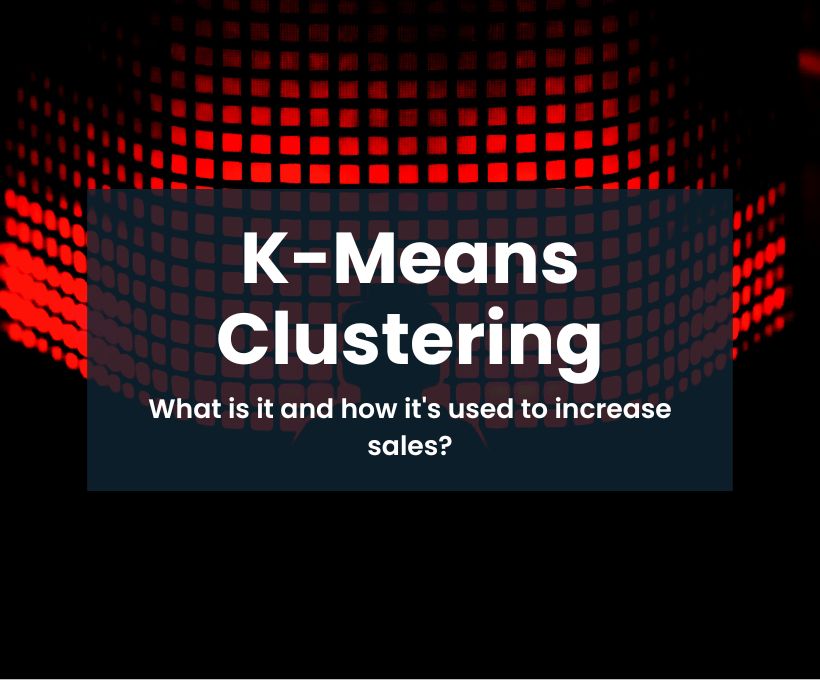Table of Contents
- What is K-Means Clustering?
- How does it work?
- How to select the optimal number of Clusters?
- Advantages
- Disadvantages
- Real-World Applications
- Conclusion
Clustering is a cornerstone of unsupervised learning, enabling us to group data points based on inherent similarities. Among clustering techniques, K-Means Clustering stands out for its simplicity, efficiency, and practical applications. In this post, we’ll break down the working of K-Means, explore its parameters, discuss how to choose the optimal number of clusters, and weigh its pros and cons.
What is K-Means Clustering?
K-Means is a widely-used clustering algorithm that partitions a dataset into k distinct clusters, each represented by a centroid. The algorithm iteratively adjusts the clusters to ensure data points within each cluster are as close as possible to their respective centroid.
Key parameters in K-Means include:
- K (Number of Clusters): Defines how many clusters the data should be grouped into.
- Centroid: The central point of each cluster.
- Distance Metric: Measures proximity between points and centroids (e.g., Euclidean or Manhattan distance).
- Iterations: Number of times the algorithm adjusts clusters to achieve optimal results.
- Initialization Method: Determines how centroids are initialized (e.g., randomly or using the smarter K-Means++ method).
How Does K-Means Clustering Work?
The algorithm follows these steps:
- Initialization:
- If using the random method, centroids are initialized randomly.
- With K-Means++, centroids are chosen strategically, analyzing patterns and ensuring they are far apart.
- Assignment:
- Compute the distance of each data point to all centroids using the specified distance metric.
- Assign each point to the nearest centroid, forming preliminary clusters.
- Adjustment:
- Update the position of each centroid by calculating the mean of the data points assigned to it.
- Iteration:
- Repeat the assignment and adjustment steps until convergence is achieved or the specified number of iterations is completed.
- Convergence occurs when centroids stabilize and no points change clusters.
How do you select the optimal number of clusters (K)?
Choosing the right value for k is critical for effective clustering. Here are two common approaches:
- Domain Expertise:
- Rely on knowledge from domain experts who can estimate the possible number of clusters based on the data context.
- Elbow Method:
- Calculate the Within-Cluster Sum of Squares (WCSS) for different values of k.
- WCSS measures the sum of squared distances of data points from their respective centroids.
- Plot WCSS against k and look for the “elbow point”—the value where WCSS shows a significant drop before flattening out.
- In simple words, experiment with different values of K and choose the one with the optimal cluster quality.
Advantages of K-Means Clustering
- Ease of Use: Simple to understand and implement, even for large datasets.
- Classification of All Points: Every point is assigned to a cluster, ensuring no data is left ungrouped.
- Versatility: Works well with dispersed datasets where clusters are not tightly packed.
Disadvantages of K-Means Clustering
- Sensitivity to Outliers: Even a few outliers can distort cluster assignments.
- Difficulty in Choosing K: Determining the optimal number of clusters can be challenging, especially for large datasets.
- Dependence on Initial Values: Poor initialization of centroids can lead to suboptimal clustering.
- Static Centroids: Once trained, centroids remain fixed, making the algorithm sensitive to new data points, which are assigned based solely on proximity to existing centroids.
Real-World Applications
K-Means clustering has practical applications in numerous fields, including:
- Customer Segmentation: Grouping customers based on purchasing patterns or demographics.
- Image Compression: Reducing image size by clustering similar colors.
- Market Research: Identifying consumer behavior trends.
In the upcoming posts, I’ll be sharing more on customer segmentation by taking real-world challenges, stay tuned.
Final Thoughts
K-Means Clustering is a robust algorithm that simplifies data grouping, making it accessible for businesses and researchers alike. While it has its limitations, understanding how to fine-tune parameters and mitigate downsides can unlock its full potential.
Whether you’re tackling customer segmentation, building recommendation systems, or exploring data patterns, K-Means is a valuable tool to have in your machine-learning arsenal.
Curious to Learn More?
If you’re exploring AI/ML projects or need insights into implementing clustering techniques, let’s connect!
